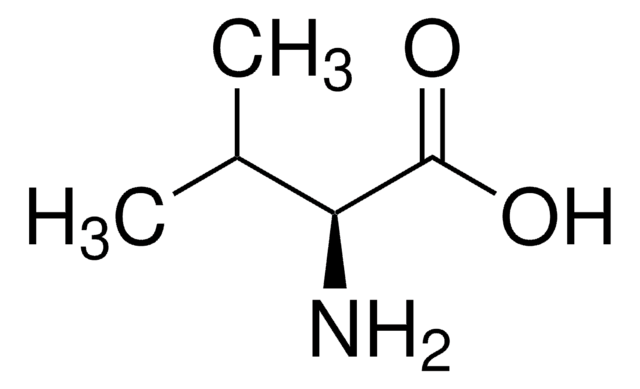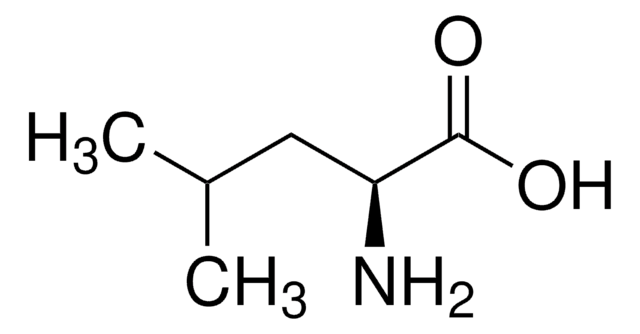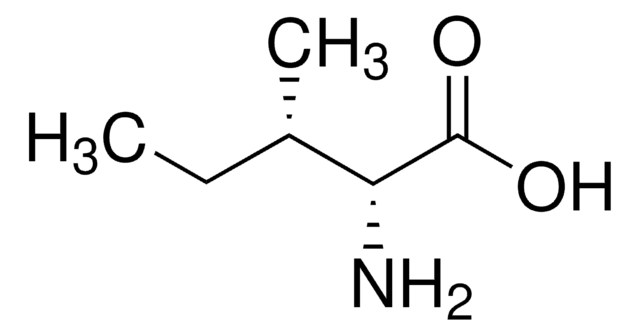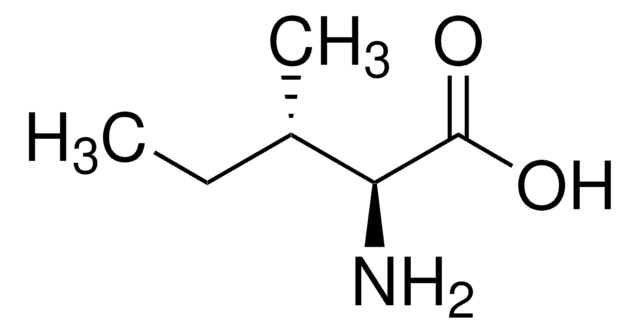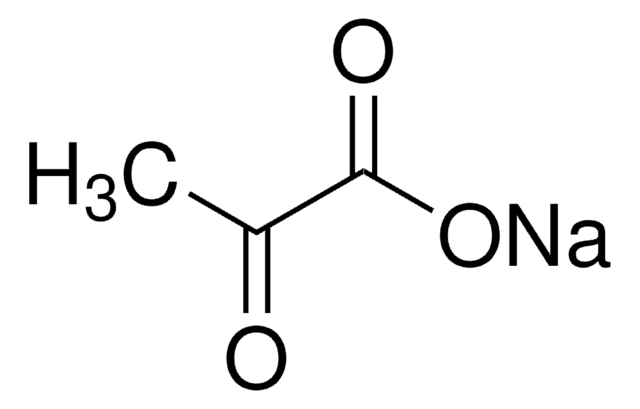V705
L-Valine
99%
Synonym(s):
(S)-α-Aminoisovaleric acid, L-2-Amino-3-methylbutanoic acid
Sign Into View Organizational & Contract Pricing
All Photos(1)
About This Item
Linear Formula:
(CH3)2CHCH(NH2)CO2H
CAS Number:
Molecular Weight:
117.15
Beilstein:
1721136
EC Number:
MDL number:
UNSPSC Code:
12352209
PubChem Substance ID:
Recommended Products
Assay
99%
optical activity
[α]20/D +27.5°, c = 8 in 6 M HCl
optical purity
ee: 99% (GLC)
mp
295-300 °C (subl.) (lit.)
SMILES string
CC(C)[C@H](N)C(O)=O
InChI
1S/C5H11NO2/c1-3(2)4(6)5(7)8/h3-4H,6H2,1-2H3,(H,7,8)/t4-/m0/s1
InChI key
KZSNJWFQEVHDMF-BYPYZUCNSA-N
Looking for similar products? Visit Product Comparison Guide
Application
Reagent employed in organic synthesis including peptide coupling reactions.
replaced by
Product No.
Description
Pricing
Storage Class Code
13 - Non Combustible Solids
WGK
WGK 1
Flash Point(F)
Not applicable
Flash Point(C)
Not applicable
Personal Protective Equipment
dust mask type N95 (US), Eyeshields, Gloves
Regulatory Information
新产品
Choose from one of the most recent versions:
Already Own This Product?
Find documentation for the products that you have recently purchased in the Document Library.
Journal of the Chemical Society. Chemical Communications, 879-879 (1994)
Tetrahedron Letters, 34, 5701-5701 (1993)
Aldrichimica Acta, 13, 13-13 (1980)
Sonia Jego et al.
Nature neuroscience, 16(11), 1637-1643 (2013-09-24)
Rapid-eye movement (REM) sleep correlates with neuronal activity in the brainstem, basal forebrain and lateral hypothalamus. Lateral hypothalamus melanin-concentrating hormone (MCH)-expressing neurons are active during sleep, but their effects on REM sleep remain unclear. Using optogenetic tools in newly generated
Shankar Sachidhanandam et al.
Nature neuroscience, 16(11), 1671-1677 (2013-10-08)
Neocortical activity can evoke sensory percepts, but the cellular mechanisms remain poorly understood. We trained mice to detect single brief whisker stimuli and report perceived stimuli by licking to obtain a reward. Pharmacological inactivation and optogenetic stimulation demonstrated a causal
Our team of scientists has experience in all areas of research including Life Science, Material Science, Chemical Synthesis, Chromatography, Analytical and many others.
Contact Technical Service